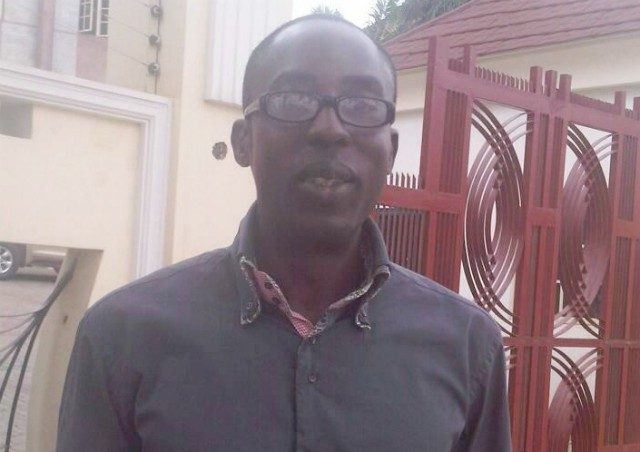It was December, 1995. We were roused from sleep by shouts of ‘ole, ole’. Those were the days Staff Quarters and the female hostels got robbed frequently. And most times, after being dispossessed of their valuables, victims usually got raped. I was the only ND I student in Room 124. Bolaji Onaolapo was the first to dash out of the room and by the time we got to the main gate of Unity Hall, we found out that a robber had been caught.
On interrogation, Jimoh, the apprehended suspect named a certain guest house in the Ijokodo axis as their hideout. He also named one Alhaji in Apete as one of their kingpins. Then the march started.
The first set of Polytes that broke into the hotel ran back. The Manager was holding a double barreled shotgun and he threatened to shoot if the students did not go back. As everyone scampered to avoid getting shot, one guy just came around and said “ko le pa ju eeyan kan lo ti awon to ku a fi boo” (he cannot kill more than one person before the others overpower him). Everybody gave him an “are you stupid” kind of look. He took the shock to a higher degree when he said he was ready to get shot if the others would agree to swoop on the manager.
He led the mob back into the hotel and it turned out the Manager could not shoot. The rifle was not even loaded! That was the first time I would ever realize that some people were indeed ready to die.
The second time perhaps would be 20th October, 2020 when young Nigerians chose to make their voices heard by the Federal Government. Dispersing them from the Lekki Toll Gate in Lagos had been a futile game. Thugs were sent, police could not move them, and not even Governor Babajide Sanwo-Olu could make them disperse. By the time men in military gear came and fired shots, it only made the already tense situation worse.
Passing by the Challenge protest ground in Ibadan on my way from work a day earlier, gave me an idea of the composition of protesters. As my colleague, Yomi Fatoye and I made our way through the blockade, we tried to analyse the situation.
The first known face I saw was a secondary school mate who works as an Architect. In defiance of COVID-19 protocols, we shook hands. ‘Wole, sorry we made you walk today and you will likely walk all the way home. I am sorry, but it is for the good of all”, he told me. And as we walked on, Yomi and I observed that it was indeed a mixed multitude, an all-encompassing congregation. There were lots of cigarettes for smokers, and high quality weed too. They shared freely. Apart from the thick scent, you could hear the ta-ta-ta-ta sound of the seeds burning as some of the young men took drags and enjoyed their ganja. Light music was coming from a DJ positioned under a shade away from the drizzles of rain. As we walked towards Ring Road, we noticed that shisha lovers too had their section. It was conspicuously located in the median. Young men and women were right there in the middle of the road puffing away. One other observation we made was that most of those walking away from the protest ground did so in twos; a male and a female.
It is a fact that when you have such collection of people, they will react to things in different ways.
The impetuosity of the military onslaught at the Lekki Toll Gate brings back the memory of December, 12, 2015, when the Islamic Movement of Nigeria embarked on a street procession in Zaria, Kaduna State. Unfortunately, the convoy of Nigeria’s Army Chief was passing. The situation was managed on that road with the application of what Human Rights Watch referred to as “disproportionate force”. After that, for three days, the Army embarked on a three-day crackdown of members of the sect, killing 348 of its members. The leader, Sheikh Ibrahim El Zakzaky and his wife, Ibraheemat were arrested after. It was soon found out that 347 of those bodies were secretly buried by the army in a mass grave.
Back then, many Nigerians hailed the army for dealing with what we called “affront of misguided civilians”. In September, 2016, a Commission of Inquiry set up by the Kaduna State Government found out that the army killed 348 Shiites and recommended prosecution of soldiers involved in the killing. State prosecutors swung into action but the people that ended up being prosecuted were 177 members of the Islamic Movement in Nigeria. They were charged with the killing of Corporal Dan Kaduna Yakubu, the only soldier that died in the clash.
There was another clash in Abuja in October, 2018 when Shiites staged a protest to demand the release of their leader. The Shiites admitted that the army first fired warning shots but resolved to shooting directly at them as they fled. The army said it shot and killed three of the demonstrators for attempting to steal military equipment. The Movement however claimed 42 of its members were gunned down and that it had to keep their bodies at home using ice blocks to preserve them to prevent the army from taking them away and distorting the death toll.
The shooting of unarmed protesters at the Lekki Toll Gate on October 20 will generate debates for some time to come. While claims that the army took away the bodies sounds ludicrous to some, the Shiite incident makes some others believe that it is not impossible.
Sadly, the incident and the backlash that followed might have further predisposed Nigeria and Nigerians to more danger. So many police guns and uniforms have fallen into the wrong hands and they will definitely be used in the near future. The criminals that escaped from the Correctional Centre in Edo State may not necessarily stay in Edo and for want of legitimate business to do, they may return to crime. Their different host communities will feel the heat. Policemen whose colleagues were murdered in the heat of the crisis will certainly look for scapegoats. That however, may not be without consequences, with the Orile, Lagos and Ojoo, Ibadan incidents readily coming to mind.
One of the lessons I have been able to draw from the #EndSARS protest is that as Nigerians, we all need one another. If the police could depend on youths in some neighbourhoods and members of the Oodua Peoples Congress to secure some of their stations, it means we all need to be nice to our neighbours.
The other lesson is that not all fights are won with brute force. The Yoruba saying “alagidi l’oga alagbara, t’alagbara o ba ti fe daran” (the stubborn fellow gets the better of the strongman, as long as the strongman is not ready to commit a crime) couldn’t have been truer.
Dying for Nigeria may not be necessary, especially for the youth. In an interview with a national newspaper, former Governor of Oyo State, Dr. Omololu Olunloyo said he once asked his predecessor, Chief Bola Ige whether Nigeria was worth dying for. He said Chief Ige’s answer was that he was not sure whether Nigeria was worth dying for, but he was sure Nigeria was worth living for. Both the #EndSARS protests and the Government’s reaction could have been better managed. The lesson therein is that when next the alagidi and alagbara meet, they should find a midpoint so as to avoid the circumstances that bring a person destined to die and a would-be killer together.
- Wole Adejumo sent this in from Ibadan, the capital city of Oyo State

































































